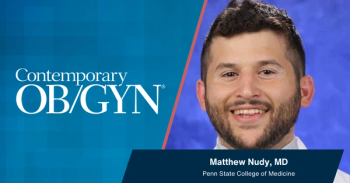
More seafood for pregnant women?
I returned from my summer vacation convinced that pregnant women should eat more seafood. My wife and I along with 3 other couples, including 3 ob/gyns, "bareboated" a sloop and sailed down Italy's Amalfi coast.
The one thing we all agreed on was how healthy the inhabitants of the seaside mountainous resort towns appeared. It certainly did not hurt that they had to walk up countless flights of outdoor stairs that served as the most direct connection between the various street levels of these cliff-embedded towns, but more telling were their meals-every variety of fish and more fish. Also plentiful were some olives, pasta, fruits, including amazingly large lemons, and fantastically fresh vegetables, especially the tomatoes.
So as an MFM I had to ask: Does this diet translate into fewer premature deliveries? The reason for my question was that despite a high incidence of cigarette smoking, Italians have one of the lowest prematurity rates in the world at 6.9%.1 Incidentally, Italian women also have one of the longest life expectancies in Europe-around 82 years.2
So what is the evidence that fish-enriched, Mediterranean-type diets are good for pregnant women? In a study from Norway, investigators compared prematurity rates among women with high and low fish intake and noted that eating fish twice or more a week was associated with a lower risk of preterm birth (odds ratio [OR], 0.84; 95% confidence interval [CI], 0.74-0.95).3
Similar findings were noted among Danish women. Pregnant women in the Danish National Birth Cohort eating fish twice a week or more, using olive or rape seed oil, and consuming 5 or more fruits and vegetables a day had lower rates of preterm birth and early preterm birth (OR, 0.61; 95% CI, 0.35-1.05 and OR, 0.28; 95% CI, 0.11-0.76, respectively).4
Conversely, low fish/seafood intake is associated with higher preterm birth rates. In another Danish prospective cohort study of 8,729 pregnant women, preterm delivery rates varied from 7.1% in women who never consumed fish/seafood to 1.9% in those who consumed at least 2 fish/seafood meals a week.5 It is interesting that fish oil supplements have not been linked to a consistent reduction in preterm birth rates, suggesting that it is fish consumption rather than just increased omega-3 fatty acid consumption that may be exerting beneficial effects on gestational duration.6
But what of the well-publicized concerns about the adverse neurodevelopment effects of mercury in fish? Employing data from a prospective cohort of 341 Massachusetts mother-child pairs, investigators from Harvard studied the association between maternal second-trimester fish intake, erythrocyte mercury levels, and children's audio-visual neurodevelopment test scores at age 3.7 The mean maternal fish intake was 1.5±1.4 servings per week, with 40 mothers consuming more than 2 servings per week. As expected, maternal fish intake was directly correlated with erythrocyte mercury levels (Spearman's r=0.42; P<.0001). The key finding was that after adjusting for potentially confounding parental and child characteristics, maternal fish intake of more than 2 weekly servings, compared with no intake, was directly associated with higher language and visual motor skills. Lesser degrees of fish consumption of no more than 2 servings per week were not associated with a significant benefit. Although higher fish intake was associated with better child cognitive test performance, higher mercury levels were linked to poorer test scores. However, when compared with children whose mothers reported never consuming fish, children of women with mercury levels below the top decile but fish intake above 2 weekly servings had higher visual motor test scores (5.9 points; 95% CI, 1.0-10.9).
Newsletter
Get the latest clinical updates, case studies, and expert commentary in obstetric and gynecologic care. Sign up now to stay informed.











